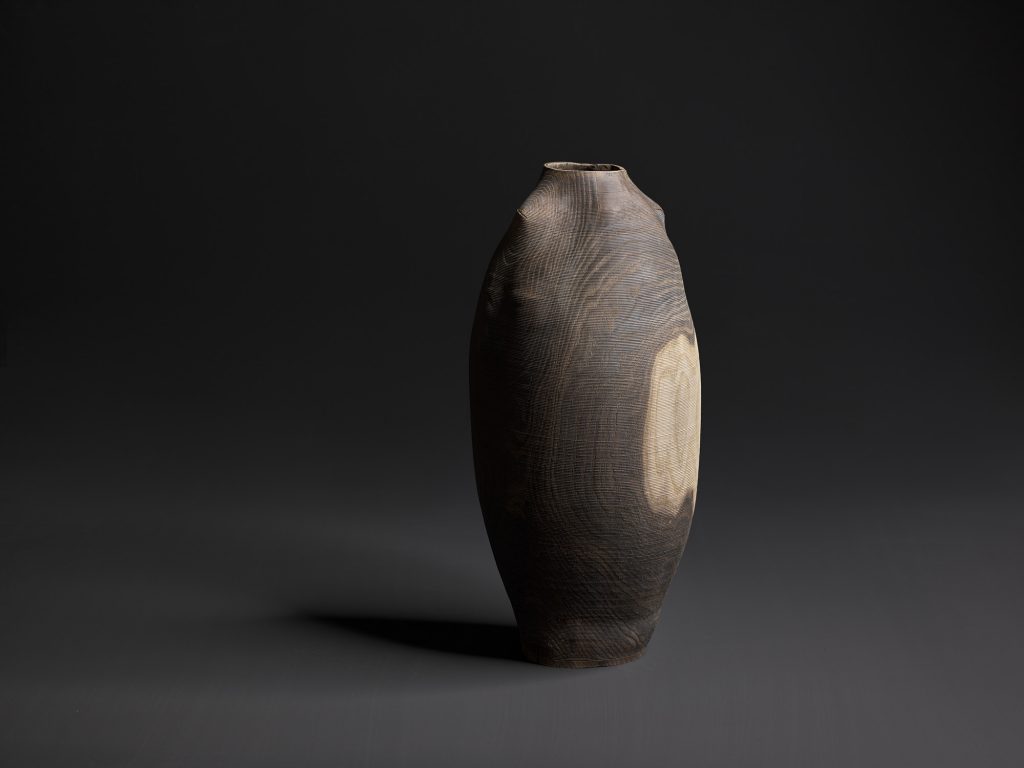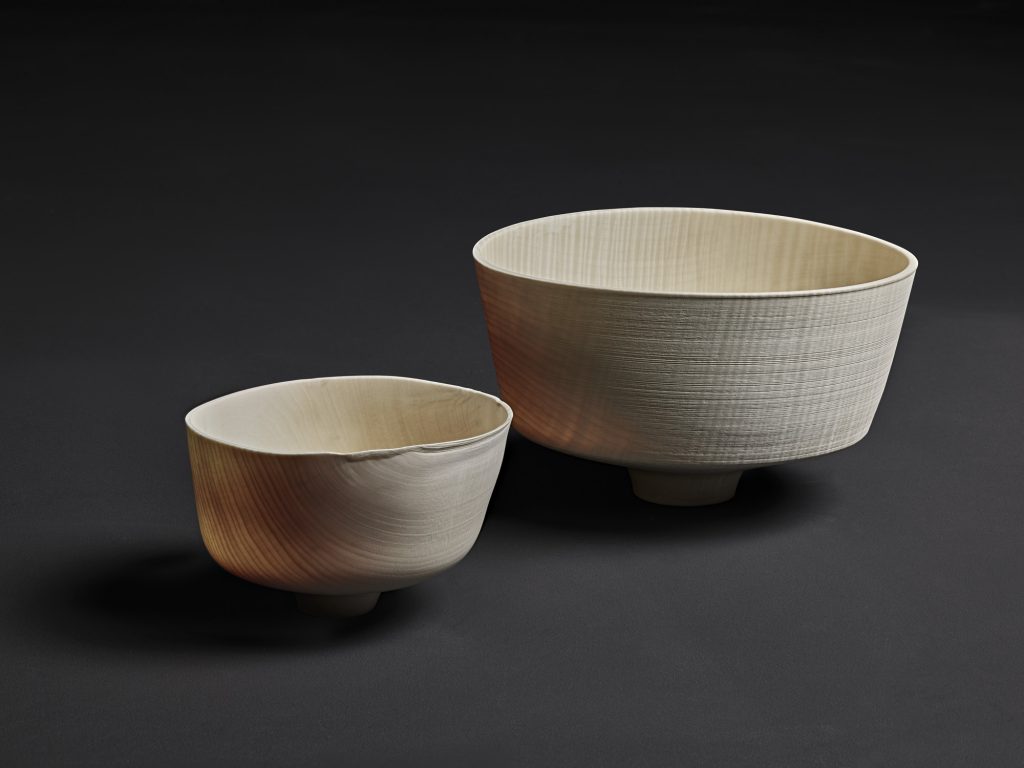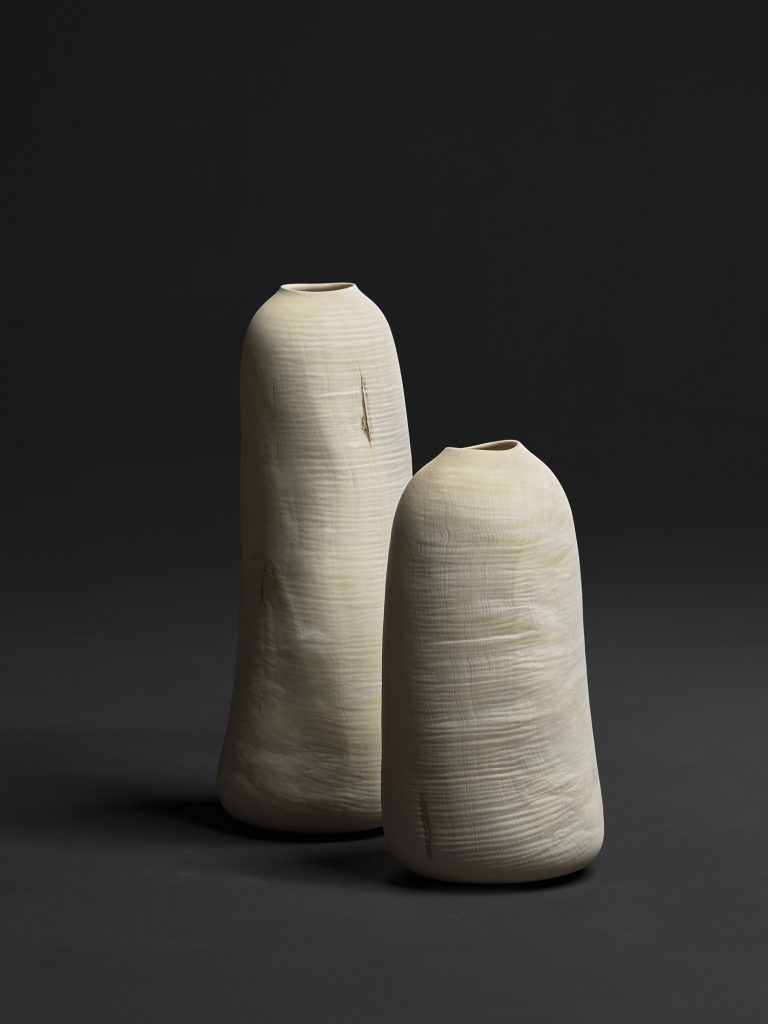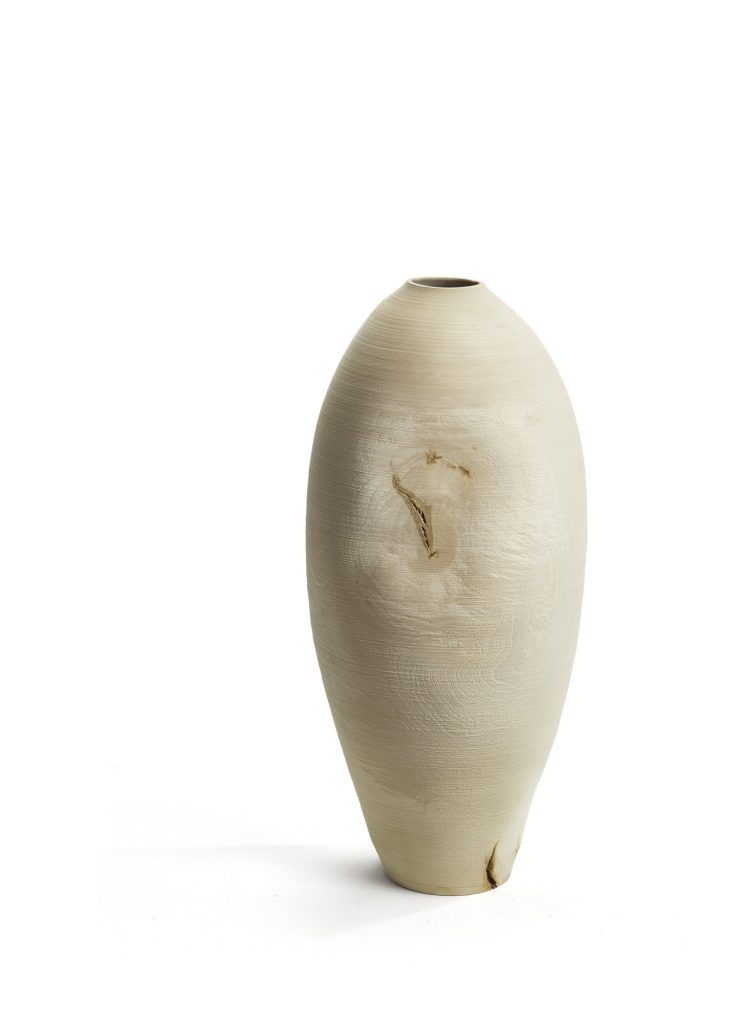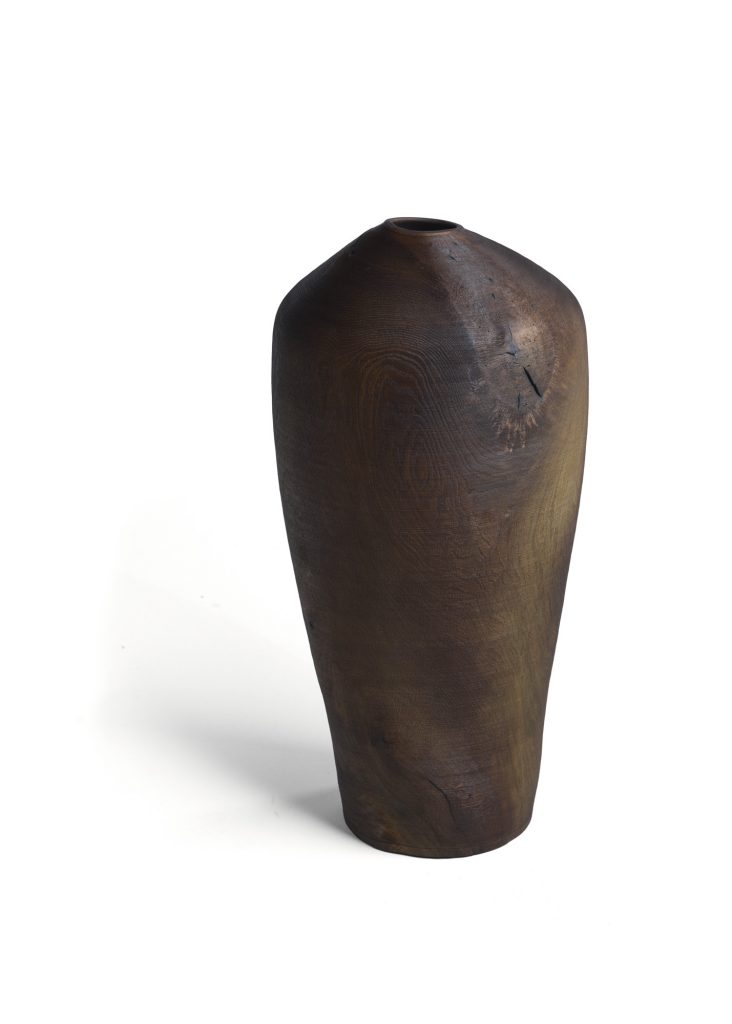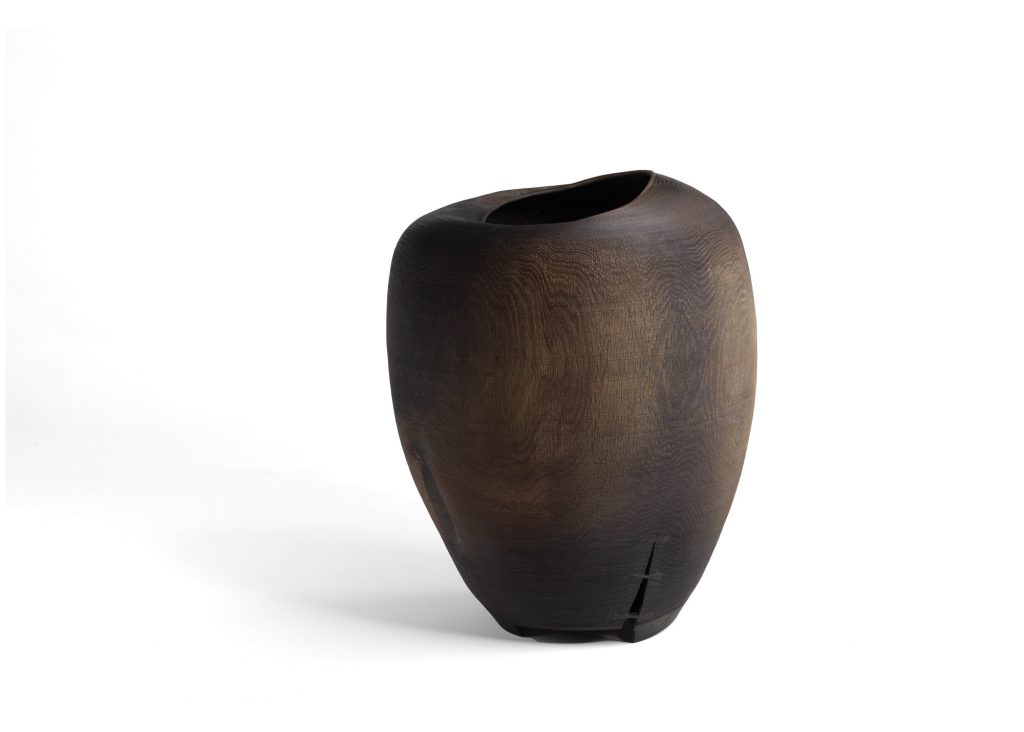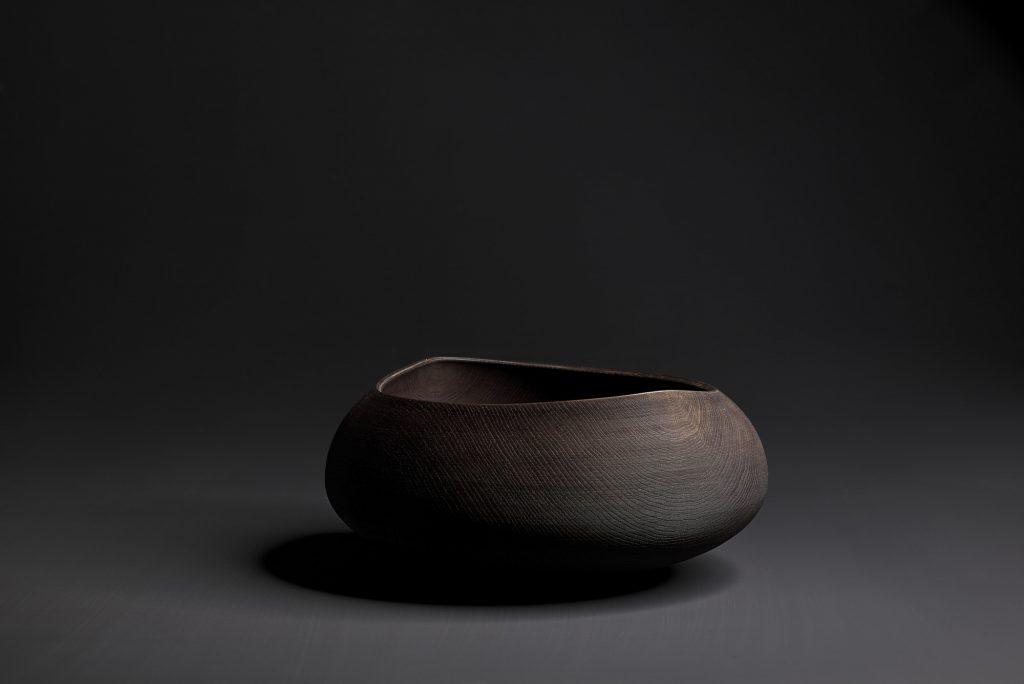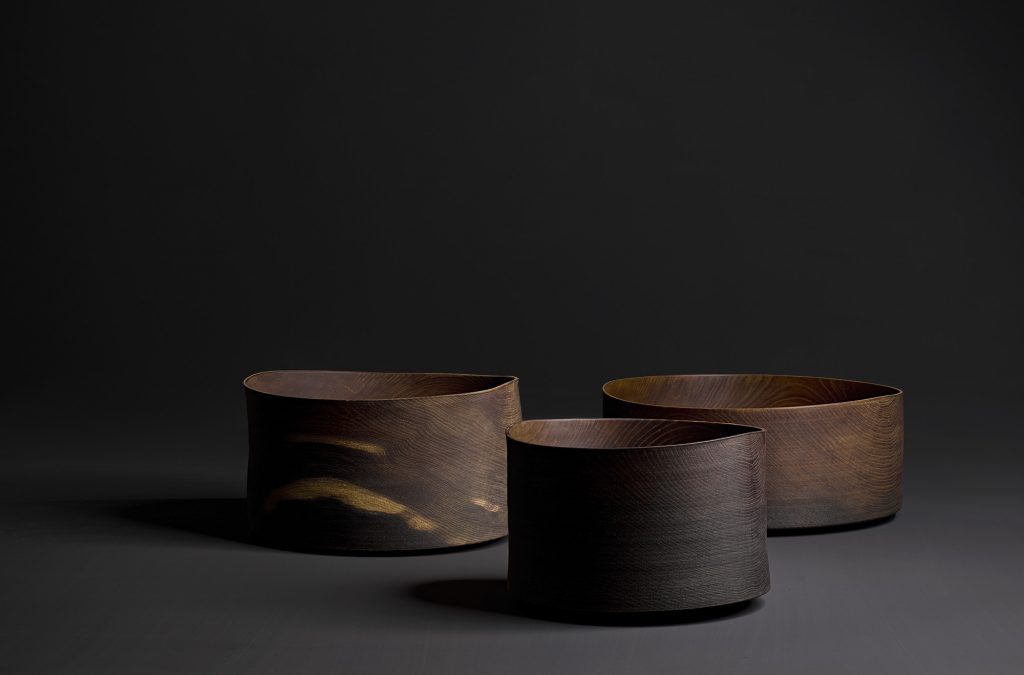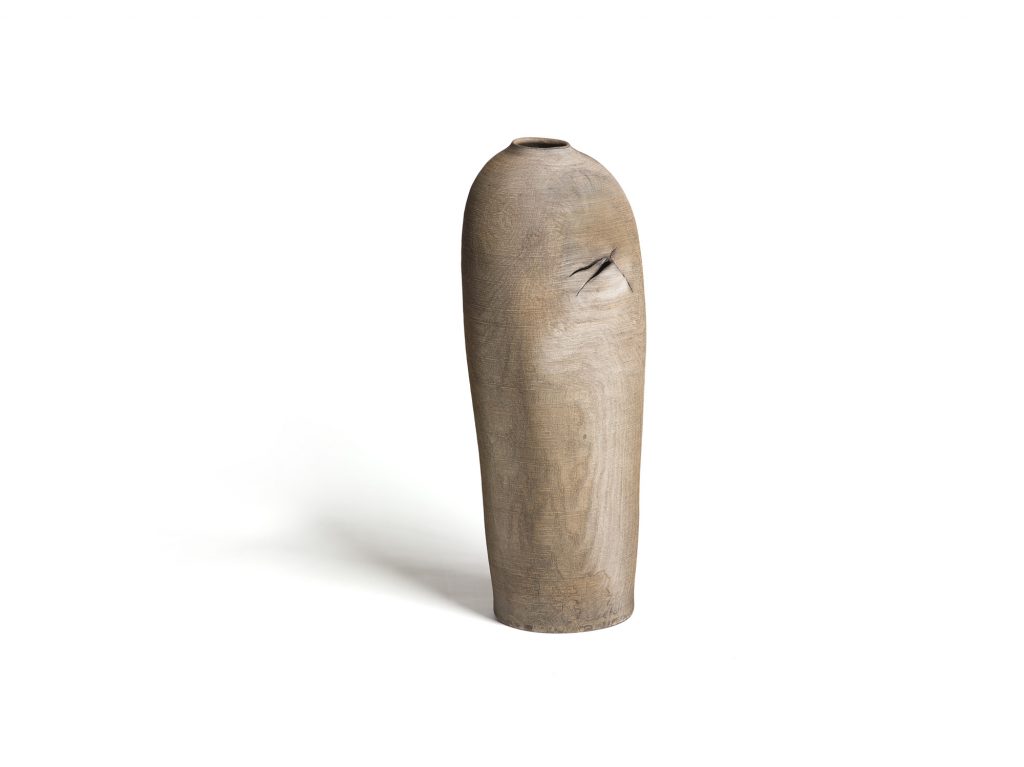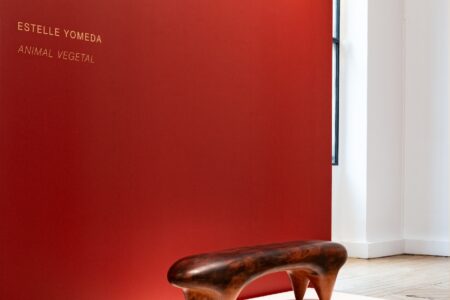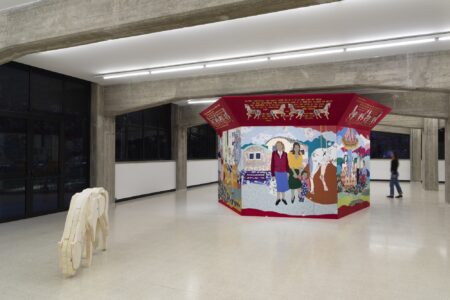Ernst Gamperl: Living Material
Ernst Gamperl creates large-scale wooden vessels, expertly crafting the material to reveal and express natural details and textures. In this careful and considered process, knots, bulges, splits, indentations, and scars are elevated, shown to be integral parts of the material’s history and lifespan.
German artist Ernst Gamperl creates large-scale wooden vessels, expertly crafting the material to reveal and express natural details and textures. In this careful and considered process, knots, bulges, splits, indentations, and scars are elevated, shown to be integral parts of the material’s history and lifespan. Never imposing his own will upon the wood, Gamperl instead works with the material to demonstrate the innate beauty in its flaws. TLmag speaks with the artist about his beginnings, the relationship between scale and space, and how he knows when a piece is finished.
TLmag: There’s something quite humble about dedicating and building your craft around one material. In your biography on your website, you write that even today you carve and turn similar shapes time and again. What is it that you gain through this repetition?
Ernst Gamperl (EG): Repetition is a theme in itself, and the form I work with is the vessel. At the beginning of my career I started with bowls, but over the past thirty years I’ve enlarged my forms. There is a huge amount of variety in what I can do now, but it’s always themed around this idea of the vessel. When I begin a piece, I’ll go and find some material, and often at that point the wood is already telling me something about what it could become. Then when I start working on it, I consider the object and the material, then I get inspired, and this is when the real process begins. But it also depends on my mood because I’m also a human being, and human beings aren’t always inspired to make something. In this case it helps to have the vessel as a frame to start the process with, and then the wood itself teaches and guides you. So repetition gives me stability and a starting point.
TLmag: How do you choose your material? What is your process like?
EG: Generally I start with an idea, and when I prepare the wood and take the bark away, I see details that were hidden before. Then I rethink and often completely change the idea to show these details in a better way, or to show the essence of what the wood wants to be. Often I have to be open minded and not just blindly follow my own ideas. I work on the lathe, but the turning process is just a small part of what I do. When the turning process is finished, the structure of the wood starts to warp and I can’t retouch it or return to the lathe. But I can alter the surface of the piece by working with minerals or adding texture, so I always have possibilities to change things.
TLmag: When the work is about revealing the qualities of natural material, how do you know when to stop?
EG: That’s a very good question. When I was just starting with my work, I received an offer to make my first exhibition. I went through all my pieces, asking myself if each of them was good or bad, or whether I could improve it. I was insecure about when a piece was finished. Now I’m more secure, and I know when it’s a good time to stop. But often pieces come back to my workshop after touring galleries for several months or even years, and I get to see my work again with new eyes. Some of these I still love, but other times pieces that have already been shown in galleries come back to me and I’ll retouch them or try out new techniques. So I don’t really think of my pieces as being finished at all.
TLmag: How has your practice evolved over time?
EG: I don’t know exactly how long I’ve been doing this, but it’s been more than thirty years. I started out by selling nice pieces of turned wood. This felt too easy though, so I started to use firewood to make pieces instead. This was my journey and challenge; to find beauty in a normal, everyday material. When I’m making a piece now, I have such a huge amount of experience, and if a problem appears that I want to resolve or if I want to create a new form, I can still remember what I did thirty years ago and use that knowledge. There are forms that I’m creating now that I couldn’t have imagined when I started, from both an aesthetic and a technical perspective. At the beginning of my career, I could hollow out thirty or forty centimetre-deep vessels, and now I can add an extra metre to that. I’ve changed the forms and the finishes, and the colours and the textures are more natural now.
TLmag: How do you view the relationship between maker, material, and space?
EG: If you want to make an object, you also have to consider its relation to space. When I started, the space in which my work was displayed was the table, so I made pieces that were in relation to the hands at the table. I still enjoy making smaller pieces, but their form and scale depends where they are being shown. Early on, I recognised that to fulfill architectural or museum spaces, I needed to create larger, more expressive pieces, so I challenged myself to increase the scale of my objects. It took me one or two years to prepare my workshop to be able to handle big objects. Similarly, when I was given a large, rare trunk, like for the ‘Tree of Life’ project, I wanted to do justice to the material by creating larger pieces from it, and then smaller ones from the leftovers.
Aside from this, I’ve always tried to be a good friend to the material. I never want to dominate the wood. This is something I can feel immediately, if an artist or a maker tries to dominate a material. For me, it’s a collaboration. I work with fresh wood, and this has a lot of movement. Because of my experience, I can control its movement as it dries, but even so, I can’t control everything. I have to give the material the freedom to do what it wants.
TLmag: You mention the “memory of the grain” often. Could you elaborate on this?
EG: ‘Memory of the Grain’ was an exhibition I made in the late ‘90s. It was the first time I started to count the rings of the wood and to sign the age of the tree on the base of my objects. I recognised that somehow the age, the weather, the soil, all of the information about that tree’s life is contained within the object. It’s information I can show easily, and with it I can try to open people’s minds to the idea that the object is part of a living thing. It’s always amazing what can happen when you deal with living material.
Ernst Gamperl’s work is on show at Spazio Nobile as part of the Threads of Nature exhibition, until July 18.
All images are by Bernhard Spöttel, courtesy of Ernst Gamperl.
